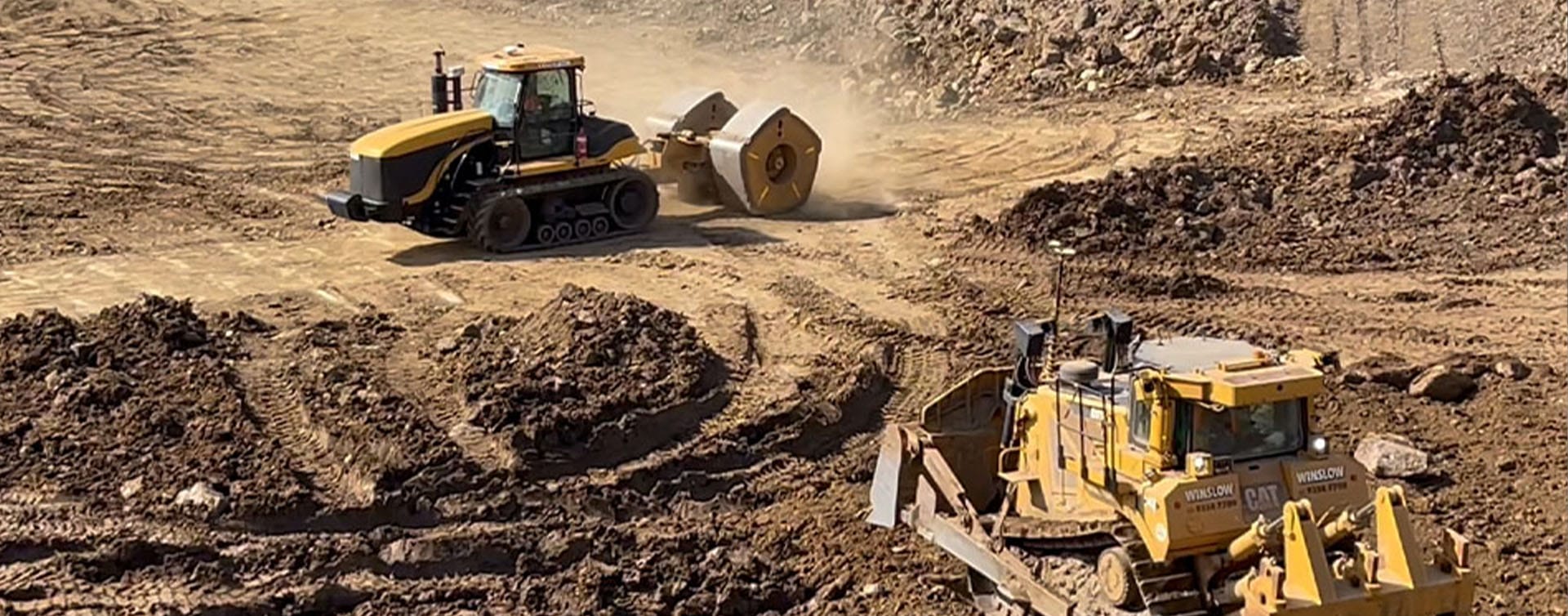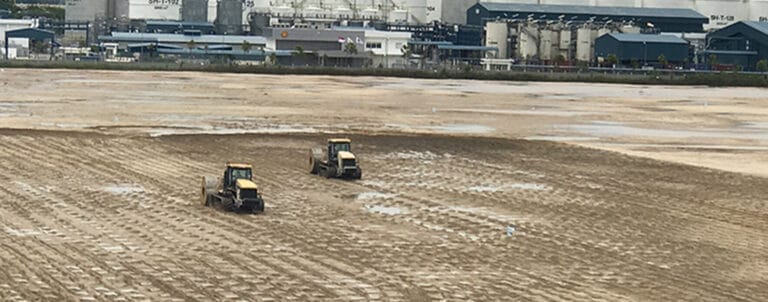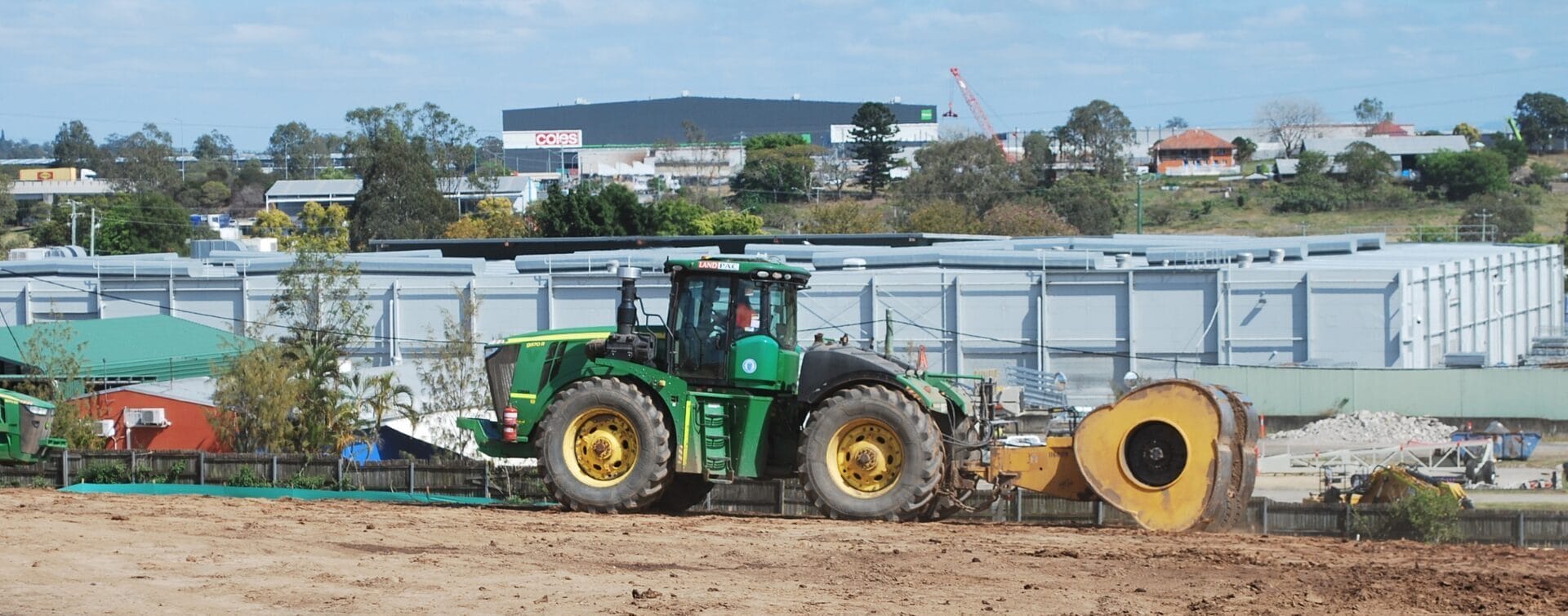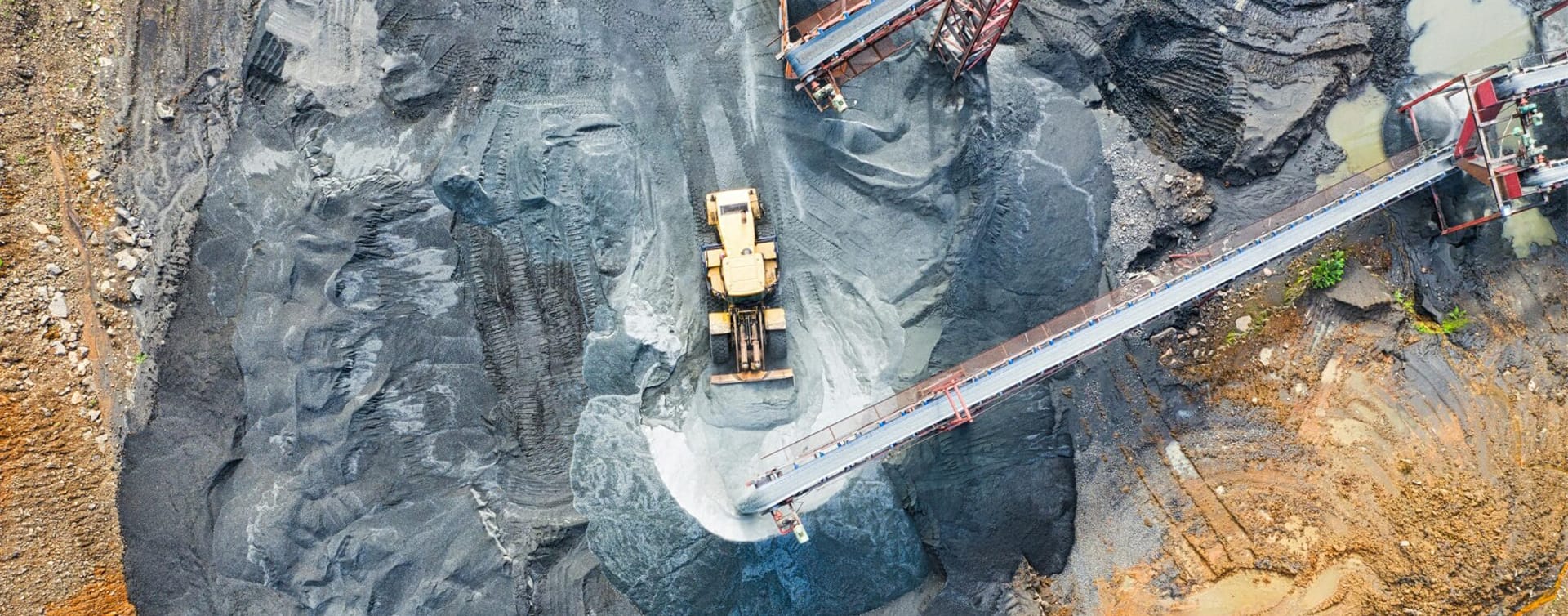High-Energy Impact Compaction in Australian Mining
High-Energy Impact Compaction in Australian Mining
From the iron-rich mines of Western Australia to the coalfields of Queensland, Australia’s mining industry depends on stable, reliable ground. Weak or unstable foundations don’t just slow down progress – they cost money, compromise safety, and shorten the life of vital infrastructure.
This is where High-Energy Impact Compaction (HEIC) comes in. Over the last two decades, it has proven itself as one of the most effective ground improvement methods in mining. Capable of stabilising haul roads, densifying tailings, and supporting rehabilitation, HEIC has become a trusted solution for projects where conventional compaction falls short.
This article explores HEIC’s role in mining: from haul roads and waste dumps to rehabilitation. It also looks at Intelligent Compaction Measurement (ICM) and the sustainability benefits that make HEIC increasingly valuable in Australian mining operations.

Contents
The Mechanics of HEIC
HEIC works on a simple but powerful principle: applying high-energy blows to the ground surface through a non-circular roller drum. Each impact delivers compaction energy deep into the ground profile, achieving densification far beyond the reach of conventional vibratory rollers or static loads. This method has been defined and studied in detail by independent geotechnical researchers, including work published by the University of Adelaide and referenced by Austroads, ensuring the approach is supported by recognised engineering bodies as well as industry practice.
Where traditional methods are limited to compacting in thin lifts (typically 150–300 mm), HEIC can treat lift thicknesses of 1–2 metres or more. This capability significantly reduces rework, speeds up project schedules, and ensures uniform compaction of even the most challenging mine materials.
For those seeking a more detailed technical breakdown, Landpac’s overview of HEIC provides further insight.
Why Mining Needs HEIC
Mining in Australia presents unique geotechnical challenges. The scale of operations, the weight of haul trucks, and the variability of overburden and tailings materials demand ground improvement methods that deliver both depth and consistency. HEIC has become an important tool in this environment for several reasons:
- Subgrade Improvement
Processing plants, conveyor systems, and workshops all rely on stable subgrades. Unstable or variable foundations risk structural failure and costly downtime. HEIC delivers deep, reliable compaction that reduces the risk of settlement.
- Haul Roads
Few surfaces are subjected to more punishment than a mine haul road. Repeated loading by 300–400 tonne trucks accelerate deterioration if the subgrade is weak. HEIC improves haul roads by:
- Rubilizing oversized rock for smoother running surfaces.
- Increasing load-bearing capacity, which extends pavement life.
- Reducing rolling resistance, lowering fuel consumption, and extending tyre life.
- Tailings Dams and Waste Dumps
Tailings are notoriously difficult to compact due to their fine particle size and high moisture content. HEIC has been successfully used to:
- Densify tailings dam embankments.
- Improve stability in waste rock dumps.
- Reduce long-term risks of erosion and settlement.
- Rehabilitation
As mines close or transition, rehabilitation becomes a priority. HEIC assists by shaping and stabilising slopes, compacting cover layers, and providing a stable base for revegetation.
For a closer look at real-world outcomes, Landpac’s mining infrastructure projects showcase how HEIC has supported Australian operations.

Intelligent Compaction Measurement (ICM): The Game Changer
One of the most significant advances in HEIC is the adoption of Intelligent Compaction Measurement (ICM). This technology uses onboard sensors to record the ground’s response to each impact, providing:
- Real-time quality control.
- Clear identification of soft spots or variable zones.
- Data-backed validation for engineers and regulators.
For project managers, ICM means no guesswork. Every compaction pass is recorded and verified, ensuring compliance and reducing disputes. For stakeholders, it builds confidence that the ground has been compacted to specification – a vital factor in mining projects where safety and reliability are paramount.
To better understand its advantages, it helps to look more closely at the specific outcomes ICM delivers when paired with HEIC.
The Benefits of ICM
The following table outlines the key benefits of ICM during HEIC, highlighting its role in improving soil density, saving time, and ensuring uniformity throughout the compaction process.
Benefit | Description |
Improved Soil Strength | Intelligent Compaction Measurement is a quality control technology that helps better understand the improved soil strength parameters during HEIC. This gives geotechnical engineers greater confidence in addressing the natural spatial variation that exists on a site. |
Time Efficiency | HEIC is one of the most cost effective and productive compaction methodologies. ICM allows immediate downloads of mapped soils for faster decision-making. |
Uniformity | The continuous application of the measured impact forces results in immediate interpretation of mapped soils, allowing rectification or remediation of poor soils to be dealt with quickly. |
Environmental and Sustainability Benefits
Independent research, including studies from the University of South Australia on ground improvement and Austroads’ pavement and materials guidelines, reinforces the environmental advantages of advanced compaction methods such as HEIC. These findings support the claims that follow, providing proof that the sustainability and efficiency benefits of HEIC are grounded in recognised engineering research rather than anecdotal evidence.
HEIC not only delivers technical and economic benefits but also contributes to sustainability. Its ability to treat soils in situ reduces the need to excavate unsuitable material or import engineered fill. This means:
- Fewer truck movements and lower emissions.
- Reduced quarrying of new materials.
- Faster, less resource-intensive ground improvement.
In mining, HEIC plays a key role in rehabilitation by compacting cover materials, stabilising slopes, and reducing erosion. These efforts support environmental compliance and long-term land stability.
As Australia pushes toward more sustainable mining practices, HEIC aligns with both industry ESG goals and government requirements.
Case Study Highlights
Mining Haul Road, WA
Impact compaction improved running surfaces, reduced rolling resistance, and extended tyre life for ultra-class haul trucks.
Tailings Embankment, QLD
HEIC improved the density and stability of a tailings dam embankment, reducing risks of settlement and improving long-term performance.
Waste Rock Dump Rehabilitation, NSW
Impact compaction was applied to rehabilitate waste rock slopes, providing a stable base for revegetation and reducing erosion risks.
Explore Landpac’s detailed case studies for more technical outcomes.
The Future of HEIC in Mining
Mining faces pressure to deliver faster, safer, and more sustainable projects. HEIC addresses these challenges by:
- Allowing thicker lifts and faster schedules.
- Reducing costs tied to material import/export.
- Delivering measurable, reportable quality control with ICM.
As more mine owners and geotechnical engineers seek smarter ground improvement methods, HEIC will continue to grow in relevance. Research from Australian universities and ongoing industry trials will only strengthen its role in shaping the future of mining infrastructure.
Conclusion: Ground Improvement with Impact
High-Energy Impact Compaction has moved well beyond being an innovative alternative. It is now a proven, reliable solution for some of Australia’s toughest mining conditions – from haul roads and tailings dams to waste dumps and rehabilitation sites.
By combining deeper lift compaction, measurable outcomes through ICM, and sustainability benefits, HEIC provides the foundations that mining projects need to succeed. To explore these benefits further, you can book a technical talk or contact us by completing our contact form.
Latest news

Uncontrolled vs Contaminated Fill | Why It Matters
Understand the difference between uncontrolled and contaminated fill, the risks of each, and how Landpac’s HEIC method delivers safe, stable ground.

High-Energy Impact Compaction in Australian Mining
From haul roads in WA to tailings dams in QLD, High-Energy Impact Compaction (HEIC) is reshaping ground improvement across Australia’s mining operations. Backed by Intelligent Compaction Measurement (ICM), HEIC delivers faster, deeper, and more reliable results, boosting safety, sustainability, and cost-efficiency in some of mining’s toughest conditions.

Understanding High Energy Impact Compaction (HEIC)
High Energy Impact Compaction (HEIC) revolutionises ground improvement with its ability to achieve superior soil density and stability. Unlike traditional methods, HEIC uses advanced rollers and compaction technology to penetrate deeper soil layers.
